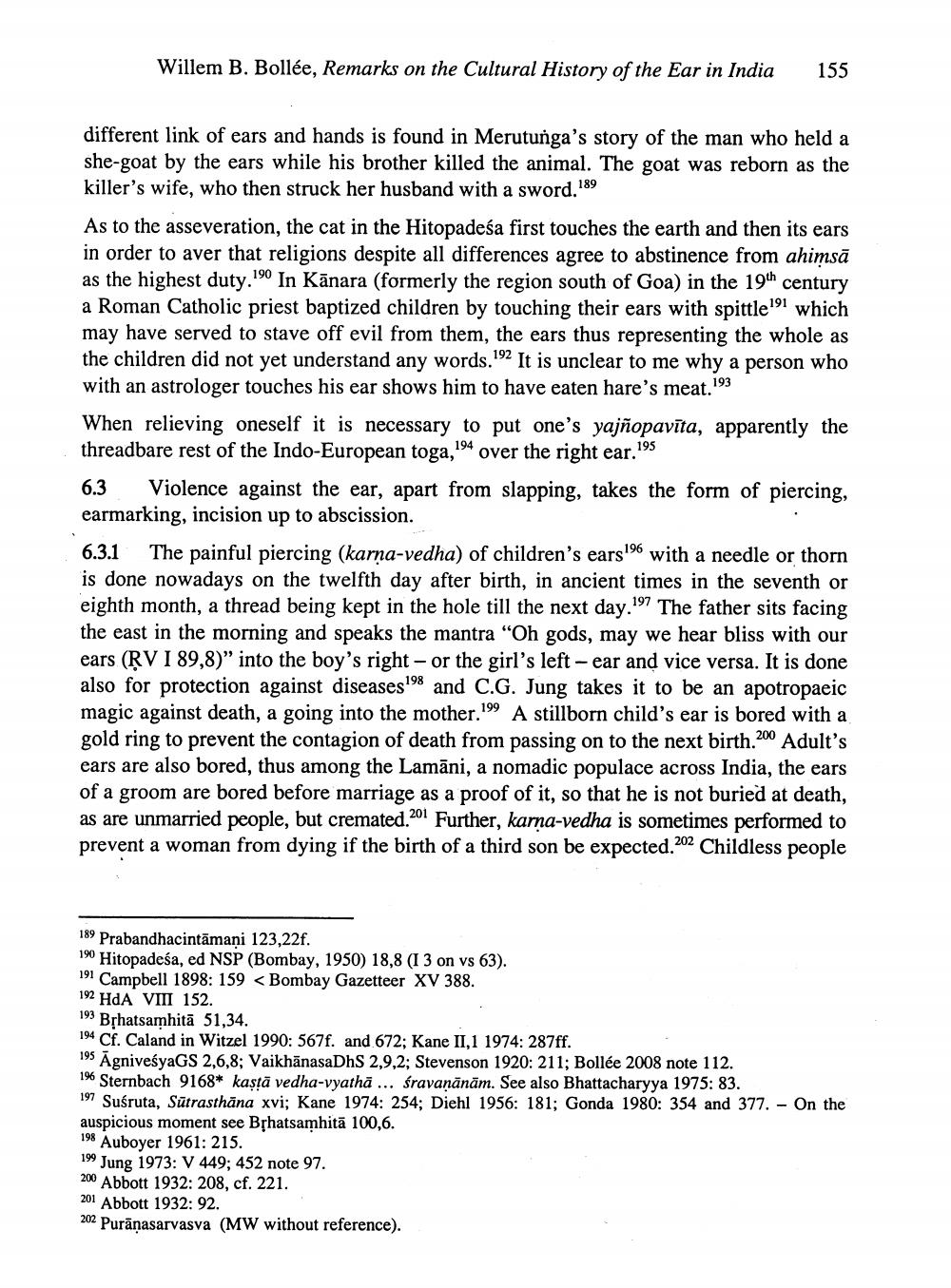________________
Willem B. Bollée, Remarks on the Cultural History of the Ear in India
155
different link of ears and hands is found in Merutunga's story of the man who held a she-goat by the ears while his brother killed the animal. The goat was reborn as the killer's wife, who then struck her husband with a sword. 189 As to the asseveration, the cat in the Hitopadesa first touches the earth and then its ears in order to aver that religions despite all differences agree to abstinence from ahimsā as the highest duty.190 In Kānara (formerly the region south of Goa) in the 19th century a Roman Catholic priest baptized children by touching their ears with spittle191 which may have served to stave off evil from them, the ears thus representing the whole as the children did not yet understand any words.192 It is unclear to me why a person who with an astrologer touches his ear shows him to have eaten hare's meat.193 When relieving oneself it is necessary to put one's yajñopavīta, apparently the threadbare rest of the Indo-European toga, 194 over the right ear.195 6.3 Violence against the ear, apart from slapping, takes the form of piercing, earmarking, incision up to abscission. 6.3.1 The painful piercing (karna-vedha) of children's ears196 with a needle or thorn is done nowadays on the twelfth day after birth, in ancient times in the seventh or eighth month, a thread being kept in the hole till the next day.197 The father sits facing the east in the morning and speaks the mantra "Oh gods, may we hear bliss with our ears (RV I 89,8)” into the boy's right - or the girl's left - ear and vice versa. It is done also for protection against diseases198 and C.G. Jung takes it to be an apotropaeic magic against death, a going into the mother.199 A stillborn child's ear is bored with a gold ring to prevent the contagion of death from passing on to the next birth.200 Adult's ears are also bored, thus among the Lamāni, a nomadic populace across India, the ears of a groom are bored before marriage as a proof of it, so that he is not buried at death, as are unmarried people, but cremated.201 Further, karna-vedha is sometimes performed to prevent a woman from dying if the birth of a third son be expected.202 Childless people
189 Prabandhacintāmani 123,22f. 190 Hitopadeśa, ed NSP (Bombay, 1950) 18,8 (I 3 on vs 63). 191 Campbell 1898: 159 < Bombay Gazetteer XV 388. 192 HJA VIII 152. 193 Brhatsamhitā 51,34. 194 Cf. Caland in Witzel 1990: 567f. and 672; Kane II, 1 1974: 287ff. 195 ĀgniveśyaGS 2,6,8; VaikhānasaDhS 2,9,2; Stevenson 1920: 211; Bollée 2008 note 112. 1% Sternbach 9168* kaştä vedha-vyathā ... śravaņānām. See also Bhattacharyya 1975: 83. 197 Suśruta, Sūtrasthāna xvi; Kane 1974: 254; Diehl 1956: 181; Gonda 1980: 354 and 377. - On the auspicious moment see Brhatsamhitā 100,6. 198 Auboyer 1961: 215. 199 Jung 1973: V 449, 452 note 97. 200 Abbott 1932: 208, cf. 221. 201 Abbott 1932: 92. 202 Purāṇasarvasva (MW without reference).




